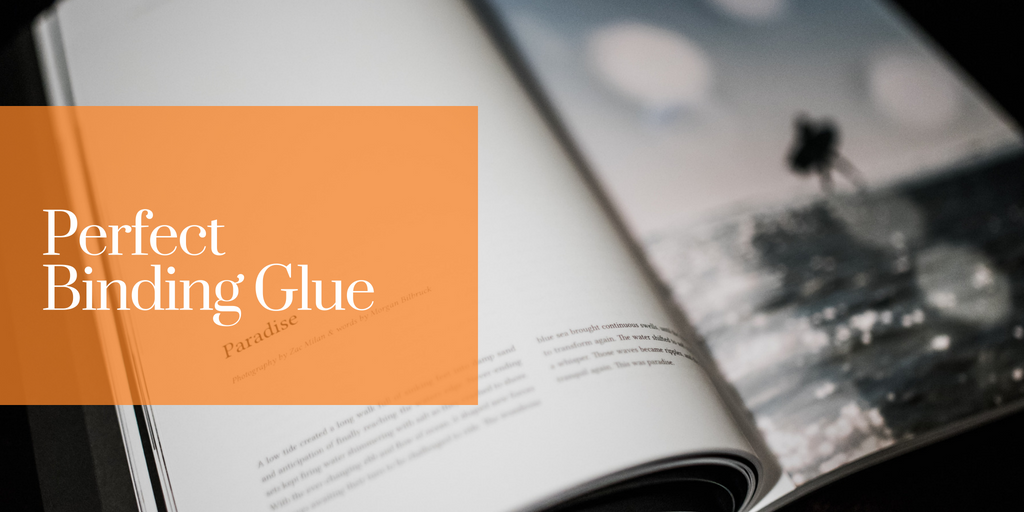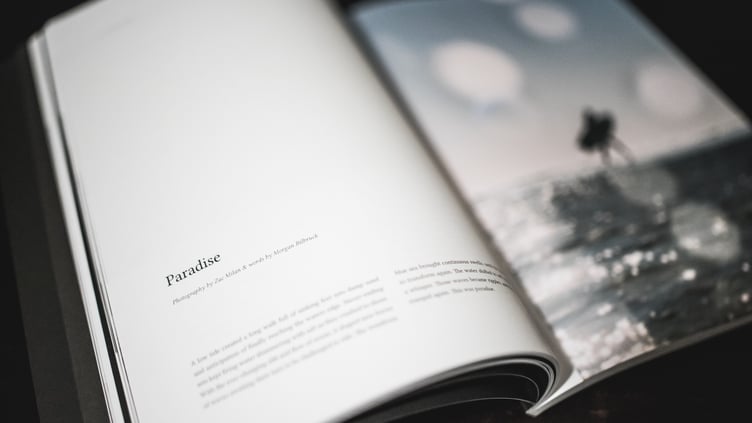The method of bookbinding often used to make soft cover and paperback books is called "perfect binding".
Perfect binding puts all the book pages together, roughens and flattens the edge, then a flexible glue attaches the paper cover to the spine (About.com). The rough edge of the spine improves the glue application.
Perfect Binding Glue
Perfect binding is most commonly done with hot melt glues. Hot melt glues are polymer based and are 100% solids, containing no solvents or water. They are also thermoplastic which means they are a solid at room temperature, but liquefy upon heating. Most hot melts are applied at a temperature around 350°F.
A glue alternative that is growing in popularity for perfect binding is PUR glue. PUR glues are a more recent development for perfect binding and are largely different from the EVA and SBR (styrene butadiene rubber) hot melts. They polymerize when applied so that they form much stronger bonds than traditional hot melts. They also possess superior flexibility and can withstand a larger range of temperatures. This is an attractive glue solution because PUR bound books tend to lay flatter.
Another glue option available for perfect binding is PVA glue (polyvinyl acetate). These can be applied at room temperature, but require a special oven for drying (PrintWiki).
Want to learn more about perfect binding glues?








